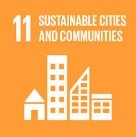“We are creating a more resilient and secure society through the inclusion of all citizens in the disaster prevention and response system”
The EU for Serbia Resilient to Disasters Project, organised a workshop with the aim of developing a training curriculum, as well as the online training in the areas of civil protection, risk reduction and disaster recovery. The workshop was organized by the Public Investment Management Office (PIMO) and the United Nations Development Programme (UNDP), with the participation of representatives from the Ministry of Interior – Sector for Emergency Management (SEM), National Academy for Public Administration, and the civil protection sector.
Some of the discussed topics were:
- Understanding implication of the climate change on Serbia and the surrounding region,
- Climate change mitigation and international commitments,
- Functioning in the conditions before, during, and after disasters,
- System for disaster risk reduction and emergency response in Serbia,
- Identifying the first signs of a disaster onset.
Good knowledge of all these areas is crucial for all members of local communities.
After the floods that hit Serbia in 2014, UNDP and the Government of the Republic of Serbia recognized the need to create a comprehensive and modern system of local prevention and response to disasters. It should include all citizens, associations and businesses, especially those who are at the source of potential disasters. Everyone needs personal and collective protection measures, as well as the knowledge and skills to overcome crises with as few consequences as possible.
Sandra Nedeljkovic, Deputy Director of PIMO pointed out that the disaster risk reduction mechanism in the Republic of Serbia has been significantly improved since 2014. “That year was a reminder and a warning to all of us that we need to change and shift the focus of activities towards prevention and preparedness for unwanted events in order to reduce the damage and losses. During all these years, PIMO has been providing support to their colleagues both from the state authorities and local self-government units. Local communities are extremely important because the first response is crucial. Continuous training in this area has an impact on the everyday safety of our citizens and that is why we pay special attention to this segment, in addition to investing in prevention”, adds Ms Nedeljkovic.
According to Zivko Babovic, Head of the Risk Management Directorate within the Sector for Emergency Management of the Ministry of Interior, the Republic of Serbia has significantly strengthened the Sector for Emergency Management in the previous period, especially by passing a series of laws and strategic plans. “Thanks to the Law on Disaster Risk Reduction and Emergency Management, today we have almost 80% of local self-governments that have drafted disaster risk assessments, and about 40% of local self-governments have adopted protection and rescue plans. Two years ago, this data was at the level of a statistical anomaly”, adds Zivko Babovic.“Cities and municipalities in the Republic of Serbia have a legal obligation to appoint civil protection commissioners and deputy commissioners, as well as to establish general-purpose civil protection units. It is not only a legal obligation. From a local aspect and in the context of depopulation, as well as changed climatic factors and worn out or undeveloped infrastructure, it seems that organizing the community through the civil protection system is a ‘basic need’. It is precisely the civil protection system that represents the bridge of trust and communication, which is lacking in the functioning of the community, especially in the relations between the administration and the citizens, and the people and nature”, says Zdravko Maksimovic, Head of the Department for Civil Protection Affairs in the City Administration of the City of Kraljevo.
Over the next two years, the Project will train 900 representatives of local self-government units, civil protection units, public enterprises, citizens' associations, as well as all other stakeholders involved in the civil protection system and engaged in the fieldwork.
As an example of good practice that they transferred from Kraljevo to other local self-governments, Zdravko Maksimovic points out the system of education, training, and joint participation in the development of strategic and planning documents. “We believe that the greatest success in our work is the fact that we have reached individuals, and all organizations and institutions without which we can’t talk about effective prevention, response or rehabilitation from the consequences of disasters. We want to build a society of opportunities and possibilities, not of necessities, a society that goes from the stage of “risk mitigation” to the stage of active “risk management” and coordinated international response, all under the auspices of the European Union Civil Protection Mechanism.”
At the planning workshop, all participants concluded that forthcoming trainings for trainers, which will be held in October 2020, will contribute to the better education of the local representatives on civil protection, disaster risk reduction, emergency management, and disaster recovery. By increasing the learning offer and the number of capacitated trainers, the Project will extend the network of competent actors in the area of civil protection and disaster risk reduction and raise awareness on the importance of prevention and the appropriate response.
In parallel UNDP, PIMO, SEM, and local governments will supplement existing modules with climate change adaptation, reconstruction, recovery, and the EU civil protection content. Each training module will be accompanied with the carefully developed training material and user-friendly e-learning content. Preparatory activities shall be completed by the end of 2020, enabling swift start of live training sessions in early 2021.




